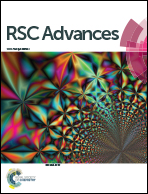Agricultural waste-derived activated carbon for high performance lithium-ion capacitors
Abstract
Activated carbon (AC) derived from the most common agricultural waste, corncob, has been synthesized through a simple chemical activation process. Furthermore, high energy density lithium-ion capacitors (LICs) were fabricated using corncob-derived AC as the cathode and commercially available Li4Ti5O12 as the anode. The optimized LIC achieves a maximum energy density of 79.6 W h kg−1 and is also capable of delivering high power density of 4 kW kg−1, which is much higher than that of similar constructions employing commercial AC as the cathode. In addition, the corncob-based LIC exhibits great cycle performance with 85.2% retention of the initial capacitance value after 2000 cycles. The present research offers a new approach for the development of high performance LICs employing carbonaceous electrodes of biomass precursors. These results make the corncob-derived activated carbon the most promising candidate for future energy storage applications.



 Please wait while we load your content...
Please wait while we load your content...